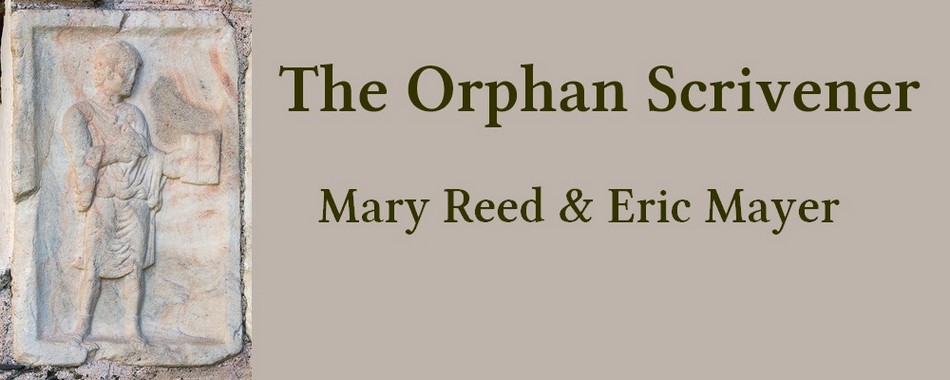MARY'S BIT or AND A PENGUIN IN A FIR TREE
This is the time of year when those who celebrate Christmas will be setting up and decorating their festive tree.
Many of our ornaments are, well, not your usual manufactured baubles, although we do have some plain glass globes now elderly enough to be losing their colour. But as in many families there are particular favourites and these are a few of mine.
Two of these ornaments travelled with me to America. Made of plastic resin of some sort, they arrived in the family well before I did. One's a flat silhouette of a blue antlered deer and the other a three-dimensional decoration created by slotting two red star-shaped pieces at right angles to each other. It always reminds me of the star on the iconic label of Newcastle's famous brown ale. There's another and much larger star -- or more precisely an attempt at one which came out more resembling an amoeba -- crayoned on a piece of paper by a young relative thirty years or so ago.
Then there's a small v-shaped basket made from two pieces of paper. Decorated with depictions of sprigs of berried holly, this basket was made by folding the pieces, cutting parallel lines into them, and interweaving the results. This somewhat arcane skill was one I learned as a youngster, along with making little handbags or tanks from dad's empty cigarette packets. Happy days!
I must not overlook a couple of shells picked up from the Florida beach opposite the building where I lived my first year in this country. They hang up on thread passed through holes made by the sea, but the hook for a penguin ornament is a bent paper clip. Creating it was one of my more ambitious craft projects. Imagine a red and white striped ball with lengths of silver cord attached to it supporting a small gondola represented by a basket originally holding dishwasher detergent. The 'guin in the gondola is about an inch high and stands daringly loose in his aerial transport, so he has been known to occasionally fall out.
Then there's a couple of green felt ornaments stuffed with cotton wool and decorated with sequins. They date from the same period as the ballooning penguin, as do several painted balsa wood ornaments. Yes, I was a fiend with a glue gun in those days! Notable examples of the woode oornaments include flat children riding three dimensional sleds and a Santa whose hands emerge at right angles from his sleeves as if in surprise or horror at realising he was about to be run over by the aforementioned sleigh. After all, when we get down to it do we really know what happens on Christmas trees when everyone is abed and darkness shrouds the house? Our cats always got the blame if ornaments tumbled off the tree overnight but what if they were not the culprits?
Ralph Waldo Emerson once talked about night hovering all day in fir tree boughs, and this was certainly the case in the Reed household. We did not have tree lights as long as we lived at home. Instead when the big marmalade tin holding decorations came out of the sideboard small candle holders were clipped onto the tree's branches. Made of tin, they had scalloped edges and they held tiny twisted candles little bigger than the sort decorating birthday cakes, but much to our childish disappointment were never lit for safety reasons.
There's also a small fairy doll who may not have been among Shakespeare's moonshine revellers but is certainly one of his orphan heirs of fixed destiny, given she's topped Reed trees in one house or another for decades. Despite losing one tiny red shoe at some point over the years and being forced to wear a greying tattered net skirt decorated with gold paint being as it's glued to her, as is her small wand topped with a battered gold star losing its glitter, a few glorious days are still hers each year.
AND FINALLY
Speaking of shoes, a week or two hence will see Time put its best foot forward and shoo the new year in. May it be a good one for all our subscribers! Meantime, the next Orphan Scrivener will arrive in subscribers' in-boxes on February 15th next year.
See you then!
Mary R and Eric
who invite you to visit their home page, to be found hanging out on the virtual washing line that is the Web at http://home.earthlink.net/~maywrite/ There you'll discover the usual suspects, including more personal essays, a bibliography, and our growing libraries of links to free e-texts of classic and Golden Age mysteries, ghost stories, and tales of the supernatural. There's also the Orphan Scrivener archive, so don't say you weren't warned! Our joint blog is at http://ericreedmysteries.blogspot.com/ Intrepid subscribers may also wish to know our noms des Twitter are @marymaywrite and @groggytales Drop in some time!
